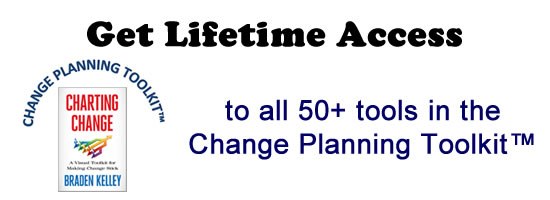Gig Economy, The Side Hustle and the Changing Digital Landscape

The term “gig economy†is positioned by its many advocates and detractors as part of the new economy, a byproduct of globalization and the Internet. It’s true that the gig economy has been further enabled by digital platforms which make it easier to collaborate on a virtual basis; and by globalization which makes it easier for a company in South Bend, Indiana to employ virtual workers in Delhi. But in fact, it’s nothing new.
Opponents of the gig economy sometimes claim that modern business trends have led to the necessity of the gig economy and “side hustle†– and while it may well be the case that wages have become stagnant and a side hustle is needed by many millennials of today, it’s certainly nothing new. The TV show Mad Men depicted life on Madison Avenue in the 1950s and 1960s, and the fictional ad agency Sterling Cooper made frequent use of freelance creatives. And while they didn’t call it “gig economy†during that time period, those creatives – both in the fictional television show and in real life – were firmly rooted in the concept of the gig outside of formal employment.
It’s very likely that your grandfather or grandmother had a side hustle some time over the last century, whether it was taking in laundry at home, selling encyclopedias door-to-door on his day off, or making gin in the attic during the 1920s. In pre-industrial society, it was not uncommon for people to cobble together a living from a variety of formal and informal sources. “Side hustle†is not a 21st century term in the least, and there are numerous references to it in newspapers and magazines throughout the 1950s.
When we take the charged political sentiment out of the equation, gig economy is just a more efficient version of something that has been around long before the modern era of globalization and digitization. It is a free market system where independent workers contract with companies for any type of work, from creative endeavors, to sales and marketing, picking up and delivering groceries, or sophisticated and high-priced consulting work, and often at rates which exceed that which could be earned in a traditional employment scenario.
“From a business owner perspective, the gig economy has changed the ways small and large companies alike manage their workforces. And more than that, it has brought about transformative changes to the sales model, moving away from the old face-to-face approach,†said Joe Catanzarite, CFP of Catanzarite Financial Services. “Today’s procurement officers come from the millennial generation, and they are accustomed to a virtual model. They don’t want, and don’t need hand-holding, and they have no use for a salesperson to walk them through the basics. They’ve already done that due diligence online, and are several steps into the decision-making process by the time first contact is made.â€
Willy Loman once proclaimed in Death of a Salesman, “I don’t want change!†Yet the key to a successful sales model is constant and transformative change – and today that means a virtual model, often rooted in a gig-based sales team brought together on a digital platform and in hundreds of locations throughout the world.
According to Michael Smith, Senior Managing Director, Blue Ridge Partners, “The digital landscape has changed, and business leaders are wrestling with transformative questions about addressing tech-savvy buyers who come to the sales process already educated and with early decisions already made. Most importantly, we must address the question of how to build a team of sellers who can use digital channels to generate new prospects, and who can engage with customers digitally. The Virtual Account Executive (VAE) role solves this problem, and also fits in with the discussion of gig economy since VAEs are unlimited by geography or travel time, and no longer have to be tied to a physical sales office.â€
Benefits of the gig world aren’t limited to the sales office. Catanzarite notes that while larger corporations benefit from a gig-based model, small companies benefit as well. “Smaller startups are seeing more of a seat at the table – and more opportunities – because they can find the specialists they need, without having to bear full-time employee costs. We saw a remarkable era of small startups in Silicon Valley in the ‘90s, rising from nothing to become some of the largest tech companies in the world, which still exist today,†said Catanzarite. “The gig model is enabling a new wave of startup innovation which will ultimately surpass the tech boom – and will be longer-lasting. The reason for that is today, innovation is not limited to one specific geography as it was then. With access to top talent from every corner of the globe, startups and innovators can compete on the same playing field as much larger competitors.â€
The Gig, from the worker perspective
Some have positioned the gig economy as an easy path to sub-standard pay and a tricky way to bypass employment regulations. Protections must remain for gig workers, but the image of laboring away for below minimum wage is mostly inaccurate, and most gig workers have found that they not only enjoy the flexibility and independence of the gig work path, they also make more money than they could with traditional employment. Jason Meeks, an independent contract driver for same-day delivery company Point Pickup, has also driven for Uber and Lyft, although he prefers working for Point Pickup, with most of the gigs involving picking up groceries at Walmart for local same-day delivery. “I’m familiar with being an independent contract driver, and appreciate being able to do it for good pay,†he says. “With more people in the area getting used to Walmart delivery, it has opened up more gig opportunities. Typically within the last couple of months I get enough gigs where I can just do Point Pickup.â€
“It’s easy to see gig economy as a so-called ‘side hustle’ or a supplement to a first career, and factors including low wages, high cost of living or just a desire for a bigger car or a longer vacation will always lead people to adapt a side hustle mentality,†said Catanzarite. “But there’s much more to it than that, and we’re seeing many younger adults leveraging gig economy opportunities as a path for starting their own business without the overhead which is traditionally involved.”
The good, the bad and the bottom line
The gig economy has always been a reality since long before it was called “gig economy,†and today it has become stronger because of digital platforms which make it more efficient for both the corporation and the individual. Still, there is much to overcome. “Gig workers don’t qualify for company benefits, and may have to navigate the challenges of self-employment, finding their own healthcare and paying their own taxes,†said Catanzarite. “And depending on the company offering the gig, there may be very little support from the company.†Some companies like Point Pickup are already addressing some of those shortfalls with direct, in-person and real-time support for drivers, a factor which has engendered loyalty among the firm’s drivers.
The benefits on the other hand include a raised income ceiling, greater flexibility and an easy path to launch one’s own consulting business. “Take advantage of gig opportunities in a smart way,†says Catanzarite. “Be prepared to conduct due diligence before entering into a gig relationship with a company, ask the right questions, and most of all, stay flexible and open to change.â€
Wait! Before you go…
Choose how you want the latest innovation content delivered to you:
- Daily — RSS Feed — Email — Twitter — Facebook — Linkedin Today
- Weekly — Email Newsletter — Free Magazine — Linkedin Group
 Dan Blacharski is a thought leader, advisor, industry observer and author of the book Dotcloud Boom. He has been widely published on subjects relating to customer-facing technology, fintech, cloud computing and crowdsourcing, and he is editor of NewsOrg.Org. Follow @Dan_Blacharski
Dan Blacharski is a thought leader, advisor, industry observer and author of the book Dotcloud Boom. He has been widely published on subjects relating to customer-facing technology, fintech, cloud computing and crowdsourcing, and he is editor of NewsOrg.Org. Follow @Dan_Blacharski
NEVER MISS ANOTHER NEWSLETTER!
LATEST BLOGS
Three things you didn’t know about credit cards
Photo by Ales Nesetril on Unsplash Many of us use credit cards regularly. From using them for everyday purchases to…
Read MoreFive CV skills of a business-minded individual
Photo by Scott Graham on Unsplash The skills listed on a CV help employers quickly understand your suitability for a…
Read More


